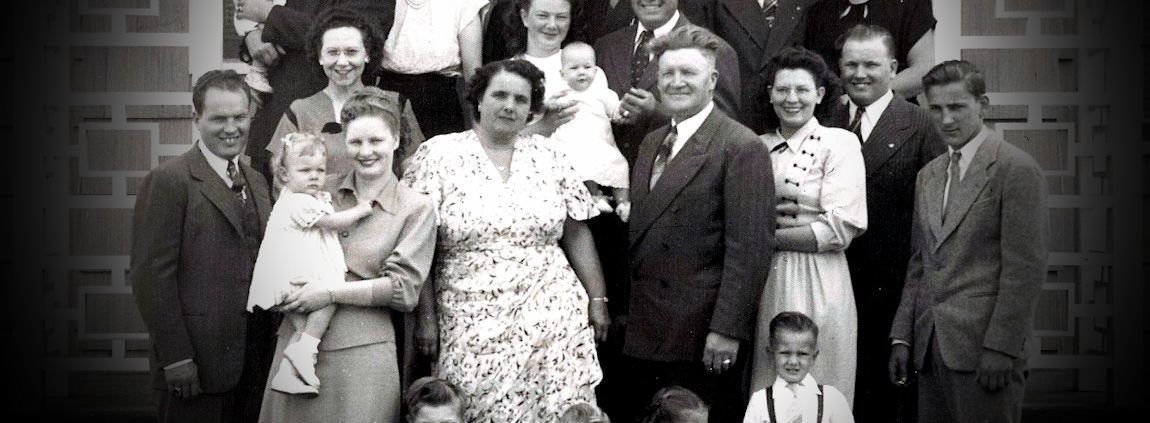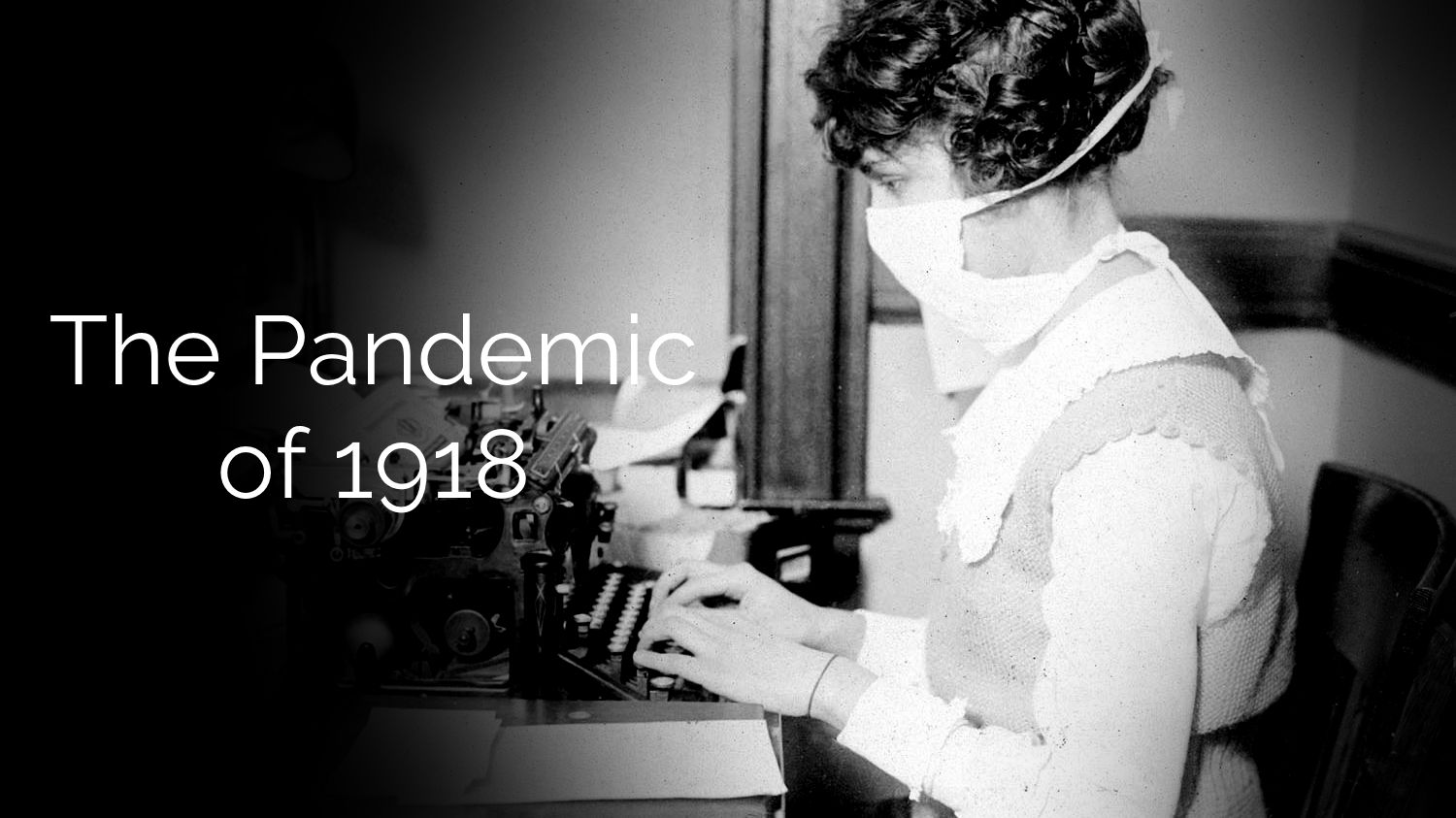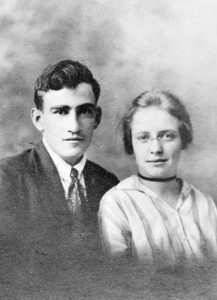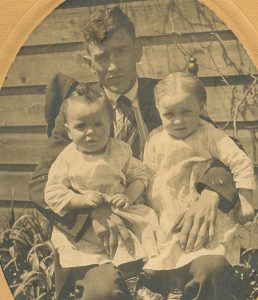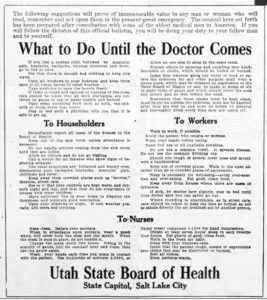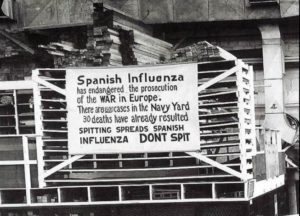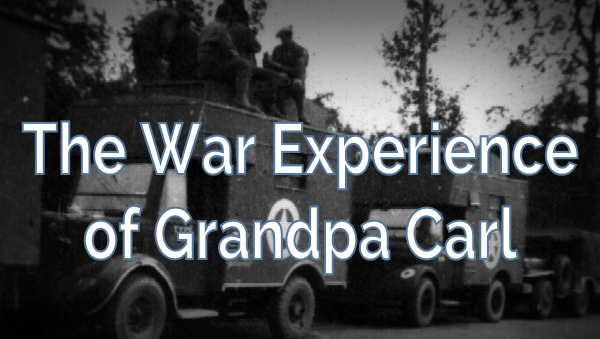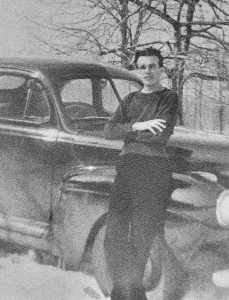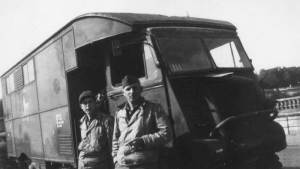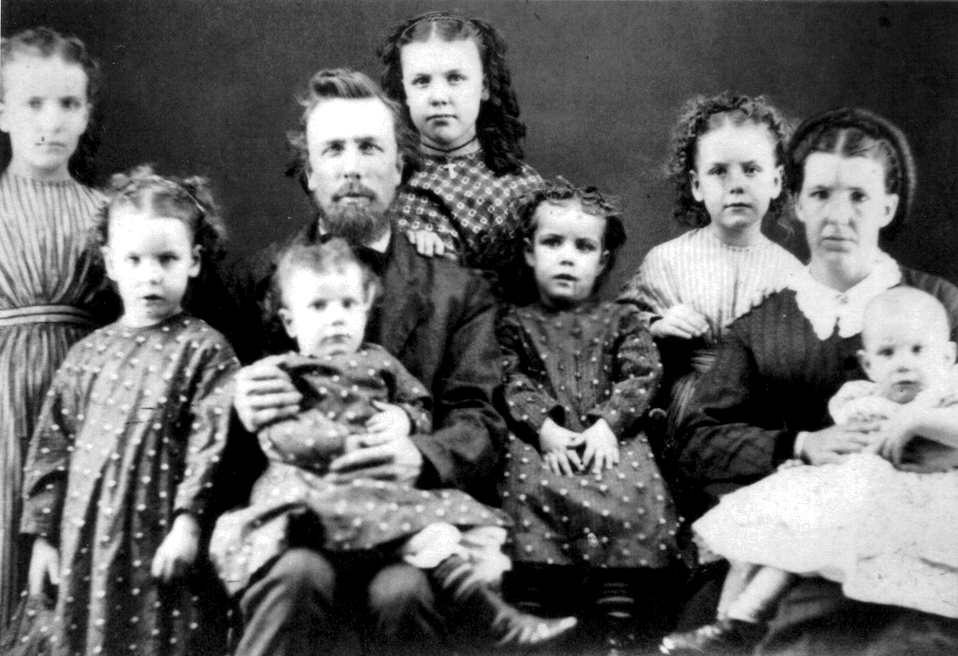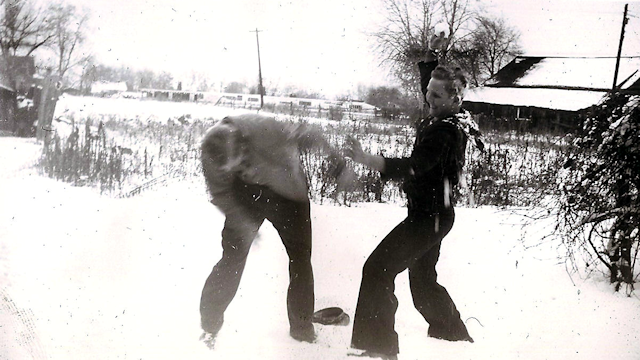Pandemics in Our Family History
January of 2020 will go down in history for the outbreak of what is called Coronavirus. As of this writing it is not yet a pandemic but it is expected to become so, despite a now worldwide effort to deal with the outbreak.
Will it have an effect upon our family?
It is a good question because such events in the past have actually changed the course of history for many families. It is the kind of event that can affect generations.
Such was the case with my great-grandmother, Susan Carson Welty.
Born in 1898, Susie, as she was called, was the first born of 11 children of Kit and Effie Mae Carson.She would marry Alfred Welty at the age of 17. Her first child, my grandmother, Winifred, was born in 1917 and her second child, Norman, would be born in November of 1918.
Susan Carson Welty died at the age of 20 just about a month after Norman was born in December of 1918. She died of pneumonia, an after effect of the Spanish flu, which was ravaging the world around that time.
According to the CDC, the 1918 flu pandemic was the most severe pandemic in recent memory. It began in January of 1918 and is estimated to have affected a third of the world’s population at the time. As it ran its course more than 50 million people died, about 675,000 in the United States.
Great grandmother Susan C. Welty was one of the those who died of the Spanish Flu. Her passing made a widower of husband Alfred at the age of 23, who would pass just four years later due to “causes of diseases”.
One of the hallmarks of the 1918 pandemic was its devastation to those ages 20 to 40 years of age, a very unusual thing for a usually healthy age group. Many died right after the onset of symptoms while others in the age group died later after long lingering affects took their toll.
It is difficult to imagine how much this pandemic affected nearly everyone.In America alone one in every three people contracted the flu. Complicating factors was that the flu actually came in “waves”, this first hitting in the winter and spring of 1918.
It subsided over the summer but then returned with a vengeance in the fall of that year.
It hit so hard that fall there was a national shortage of caskets and newspapers in nearby Elmira, New York were showing ads from the City of Philadelphia seeking embalmers for hire.
Newspapers blamed the spread of the disease on soldiers returning from Europe during the war. On September 27th it was announced that “all draft troop movements were deferred” due to the influenza outbreak.
There were, as there is now, a large variety of steps people could take to prevent getting the flu.
The City of Elmira Health Officer, Dr. R.B. Howland, warned against over-eating.
“People who are inclined to eat heartily are prone to colds and a cold may bring on influenza.” He also recommended more stringent measures in case of whooping cough, “the home must be placarded and the individual having the disease must wear a red band on the arm when outside the house the band to bear the words, “Whooping Cough.”
Articles began to run in the Elmira papers with headlines, “Spanish Influenza, What It Is and How It Should Be Treated.”
The Elmira Herald reported about Vicks Vapo-Rub, describing its origin and application, noting that Vicks was “comparatively new to New York State” and that over six million jars were sold the previous year. Catarrhal Jelly was promoted as was Horlick’s Malted Milk — “the diet during and after influenza.”
On Oct.15 the Herald announced, “The lid is on. Elmira is closed to prevent further spread of Spanish Influenza.”
The night before a “Quarantine Order” had been declared by the Board of Health. The Order read: “all theaters, churches and Sunday schools, public, parochial schools and kindergartens, public libraries and art galleries, pool and billiard rooms and bowling alleys, all places where public meetings of every name and nature including meetings of fraternal, social and labor organizations are held public and private dances, all public funerals to be discontinued, all business houses and mercantile houses in the City of Elmira to discontinue any special sales of any article or articles, that various hospitals restrict visitors, that people overcrowding street cars and that all persons refrain from visiting homes or other places where there is sickness.”
Street cars were to be fumigated and disinfected every 24 hours. “Coughing and sneezing in public places” were to be considered a “misdemeanor in the future” and would be “punishable by law.” The same was true for “the practice of visiting homes where there is illness.”
It was reported that since the quarantine went into effect on Oct. 15, Elmira was visited by 2,740 influenza cases causing 68 deaths and 155 pneumonia cases resulting in 20 deaths.
Elmira turned to celebrating the armistice and the joy of returning soldiers, but influenza lingered. On Dec. 13, 1918, the Star-Gazette reported that the “Board of Health realizing that Elmira is not free of prevalent disease orders that all homes having influenza patients be quarantined two weeks.”Susan Carson Welty died on 12 December 1918.
As the mortality rates soared, so too did the willingness to try something, anything, to save themselves and their loved ones from a horrible death.
While attempts to develop a vaccine against Spanish flu floundered, doctors pioneered other methods to care for its victims, from the “rooftop cure” where patients were exposed to the elements to an experiment with potassium permanganate on British public schoolboys.
From the apparently innocuous first wave during the early spring of 1918 to the escalating second wave of Spanish flu that gripped the world in the later months of the year, daily newspapers carried an increasing number of advertisements for influenza-related remedies as drug companies played on the anxieties of readers and reaped the benefits.
From the Times of London to the Washington Post, page after page was filled with dozens of advertisements for preventive measures and over-the-counter remedies.
“Influenza!” proclaimed an advert extolling the virtues of Formamint lozenges. “Suck a tablet whenever you enter a crowded germ-laden place.”
Another advertisement announced “as Spanish Influenza is an exaggerated form of Grip,” readers should take Laxative Bromo Quinine in larger doses than usual, as a preventive measure.
For those who had already succumbed, Hill’s Cascara Quinine Bromide promised relief, as did Dr. Jones’s Liniment, previously and mysteriously known as “Beaver Oil” and intended to provide relief from coughing and catarrh.
Demand for Vick’s VapoRub, still popular today, was drummed up by press adverts warning of imminent shortages: DRUGGISTS!! PLEASE NOTE VICK’S VAPORUB OVERSOLD DUE TO PRESENT EPIDEMIC.
Americans were informed that it was their patriotic duty to “Eat More Onions!” as part of a “Patriotic Drive Against the ‘Flu.’ ”
An American mother took this suggestion to extremes, and fed her sick daughter syrup made from onions before wrapping her in onions from head to toe. Fortunately, the outcome was successful and the child survived.
Conventional medical advice for the treatment of influenza included morphine, atropine, aspirin, strychnine, belladonna, chloroform, quinine, and, disturbingly, kerosene, which was administered on a sugar lump.
Alongside these, folk remedies thrived. If a product from the drugstore failed to alleviate the symptoms, many patients and their families turned to more traditional methods.
One popular remedy in South Africa was to place a block of camphor in a bag and tie it around the patient’s neck. One eight-year-old girl, who was taking no chances, announced that she was wearing a camphor bag around her neck “to keep off the Germans.”The practice was so widespread that, over half a century later, an elderly South African lady in a nursing home, who had survived the 1918 outbreak, refused inoculation against the 1969 epidemic of Hong Kong flu. “Not for me,” she maintained. “I still have my camphor bag.”
In North Carolina, young Dan Tonkel had taken to wearing a bag of asafetida around his neck, in the belief that the stinking extract would protect him. “It smelled to high heaven,” he recalled. “People thought the smell would kill germs. So we all wore a bag of asafetida and smelled like rotten flesh.”
In Philadelphia, Harriet Ferrel was rubbed with tree bark and sulfur, and forced to drink herbal teas and take drops of turpentine and kerosene on a lump of sugar. Harriet was also subjected to the asafetida treatment but was philosophical: “We smelled awful, but it was okay, because everyone smelled bad.”
Robert Graves’ “Welsh gypsy” housemaid had an even more unusual form of protection, consisting of “the leg of a lizard tied in a bag around her neck.” She was the only person in the Graves household who did not develop Spanish flu.
Whiskey had always been a traditional remedy for colds and influenza, and whiskey prices soared in the United States during the epidemic.
In Denmark and Canada, alcohol was only available by prescription, while in Poland brandy was regarded as highly medicinal.
One brave soul in Nova Scotia recommended fourteen straight gins in quick succession as a cure for Spanish flu. The result of this experiment was unknown; if the patient had survived he had doubtless forgotten the proceedings entirely.
In Britain the Royal College of Physicians stated that “Alcohol Invites Disaster,” a conclusion which was ignored by many. The barman at London’s Savoy Hotel created a new cocktail, based on whisky and rum, and christened it “the Corpse Reviver!”
In the universal panic of the Spanish flu epidemic, many believed that the air itself was poisonous.
One woman in Citerno, Italy, sealed up her house so effectively that she died of suffocation.
Lee Reay of Meadow, Utah, recalled one family who sealed their house up. They plugged keyholes, sealed the windows, and even closed the dapper on the stove.
Roy Brinkley’s father, a sharecropper in Max Meadows, Virginia, decided that fresh air could be fatal during the epidemic and sealed up his wife and four children in one room. The family spent seven days sitting around the wood-burning stove until it caught fire. As his family fled the house and took refuge in the vegetable patch, Brinkley was convinced that the fresh air would kill them. For the rest of his life, Roy remembered a sudden rush of fresh air and the sight of cabbages, as big as washtubs. But, once outside, the entire family soon recovered.
The all absorbing nature of the pandemic was felt by family all over. No part of the country was spared. For most, public life kind of stopped as gatherings of all types were avoided.
In Mendon, Utah, the funeral for Ann Findley Westover was limited to just 15 minutes and attendance by only healthy individuals. The town history of Mendon mentions her funeral as a particularly unjust event that denied “Sister Westover” a proper memorial.
For the Westovers in Rexburg, who were no strangers to the effects of viruses in their history, the little community saw the flu arrive with the fall weather.
While the local paper reported that there was “no occasion for panic” due to the flu the article went on to justify the town’s quarantine. Schools, churches, movie theaters and all public gatherings of every kind were prohibited.
It was during the time that little Verle George Westover, third son of Arnold and Mary Ann, was born. He would live only six months. It is not known if the family ever caught the flu or if it was a contributing factor in his passing.
If records of past health emergencies existed I am sure we would see how such events affected other members in our family.
It is not known for sure but the devastating events of 1714 to the Westover family in Simsbury, Connecticut was likely caused by a disease. Prevalent at the time were fights against small pox.
In 1713-1715 all of New England suffered from a nasty outbreak of the measles. Thousands died, especially children.
Whatever it was that caused the sadness of May 1714 with the Westovers fully affected future generations. Lost during that event was Jonah Westover, Jr, who was by then patriarch of the Westover family.
His three youngest sons – Jonah, Nathaniel and John – were taken in by his brother, Jonathan Westover, who would raise them as his own and with his own after he married a few years later.
Whatever happens with this new Coronavirus – whether it spreads or fizzles – has the potential to affect family going forward for generations.
Will we be quarantined? Many don’t think so but to 11 million people so far in the city of Wuhan, China that is already a reality.
Will there be a variety of advertised cures? Will there be profiteers emerge on account of the crisis?
No doubt. We already seen ample evidence of that on social media.
Such is the stuff of life. Such is the stuff of family. We are not really immune from the disease or the societal reaction to it.
Our past generations have been tested by it. Chances are we will be as well.
The War Experience of Grandpa Carl
I always try to spend a little time with my grandfather, Carl Begich, each Memorial Day. He is, to my knowledge, the only of our family to have given his life in the service of our country.
Memorial Day is to honor those who paid the ultimate price. Remembering Grandpa Carl by searching anew anything I can find about him or sharing something I have not shared before on Memorial Day is my way of taking part.
It would, in a perfect world, be best to visit his grave and to honor him in person. But he is buried in France and I will likely never be able to visit his grave.
He died on May 18th, 1945. I remember him on that day, too, though it fills me with sadness to think of what that day came to mean to both my grandmother and my great-grandmother – and the rest of his family.Most have an image in their mind of what it is like to lose a family member at war. The visions are of gun fire, explosions or perhaps even tanks and air planes dropping bombs.
But Grandpa Carl was a radio operator and a “code breaker”. From the very beginning he belonged to a unit tied to “Army intelligence”.
This made his war experience quite different and his death shrouded in mystery.
Grandpa Carl was born the third of seven children to Mike and Katherine Begich on January 11, 1920. His was a happy upbringing in a home filled with faith and tradition.
Carl had many pursuits – he was musical, he enjoyed writing and he with his brother developed a passion for the emerging technology of amateur radio.
When he left Minnesota after high school to pursue a career as a journalist in New York City he maintained his radio license and continued to pursue the hobby.
He met and fell in love with my grandmother, Winifred C. Welty, while in New York.
They married in May of 1942. In January, 1943 – on Carl’s birthday – my mother, Susanne C. Begich, was born.
As fate would have it they would have precious little time together as a family. In mid-February 1943, Carl enlisted and was whisked away for basic training.
The Army had needs for a man with Carl’s skills.
For a while they told him he would be engaged in a project helping to break codes against the Japanese. He was told that he would be stationed on the West Coast and was so certain of it that he sent my grandmother and my mother to California to find a place to live.
He never got to them.
Instead by September 1943 Carl was stationed in England, and there he waited with thousands of other GIs for the invasion of France. There he trained with British officers receiving hands-on training intercepting real-time German radio messages at various places throughout England.
World War II, being far more fluid than World War I, marked the advent of the mobile radio intercept unit whose task was to pick up, decrypt if possible, and pinpoint enemy units sending their messages through the airways.In England, late in March 1944 while the English and American armies were feverishly preparing for the invasion of Normandy only two months away, the U.S. Ninth Air Force, whose assignment it was to conduct the tactical air war over the Continent, ordered a Major Harry Turkel to form and train a new unit in time for the invasion.
The new unit’s task was to monitor and intercept German Air Force radio traffic while operating out of mobile caravans designed to keep pace with advancing armies. This new unit was to be aptly named the 3rd Radio Squadron Mobile (“G,” for German). Carl Begich was assigned to this unit.
Over the course of his war experience Carl wrote a prolific number of letters. In sending them home he instructed that they be saved as notes he would later use to write about his war experience.
Dutifully my grandmother saved them and they have become a treasure to us today.
These letters are all we have to know Carl Begich.
From England in September, 1943, Carl said: “I mentioned I was happy here. I meant I got accustomed to surroundings in a hurry and was glad only that I can now consider myself part of this man’s army and this theatre of operations. It had been my desire, inwardly, you know, to be part of this, actively.”
This is an amazing insight to me.
Carl was 23 years old, married, a father, and he knew well the feelings of his mother, who desperately did not want him in uniform and in Europe, in particular, during the war.
Yet Carl had the same feelings of most of who we call the “greatest generation”. He was both duty bound and anxious to serve.
In December 1943 he was missing home.
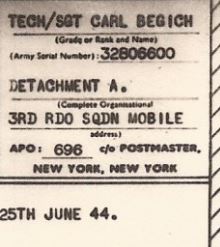 He wrote: “Reading what you wrote about the little things Cathy got coming for her Xmas and whatnot makes me homesicker than ever. Darlin’, you have no idea just how much I wish I could be there with you and the little darling. Gee…. I am glad you liked that poetry I sent you. Of course, dear, you understand what’s happening to a feller especially when he starts writing poetry. Can you beat it? Undoubtedly, I shall get those nostalgic but really lovely spurts again, I know. And when I do, I shall pass the outcomes along to you to insert in your scrap book. That scrap book idea, incidentally, is a grand one. I am keeping one here, too. Oh yes, my diary is getting pretty plumped these days, dearest.”
He wrote: “Reading what you wrote about the little things Cathy got coming for her Xmas and whatnot makes me homesicker than ever. Darlin’, you have no idea just how much I wish I could be there with you and the little darling. Gee…. I am glad you liked that poetry I sent you. Of course, dear, you understand what’s happening to a feller especially when he starts writing poetry. Can you beat it? Undoubtedly, I shall get those nostalgic but really lovely spurts again, I know. And when I do, I shall pass the outcomes along to you to insert in your scrap book. That scrap book idea, incidentally, is a grand one. I am keeping one here, too. Oh yes, my diary is getting pretty plumped these days, dearest.”
We do not know what became of the personal items of Carl Begich after he died. What we would not give now to have his diary.
In June 1944, Carl sent just two letters home. It is interesting in retrospect to read them, knowing what we do now of D-day.
“Three months ago the fellows in my outfit here began an invasion kitty, destined to give the correct predictor of the invasion date, something like 8 pounds (about $32, roughly). I was very surprised to know that I had won that jackpot….the general concensus of hopes herearound is that perhaps we may be home to celebrate Christmas this year…”
The “code breakers” of Detachment A, 3rd Radio Squadron started their voice-intercept operations a few miles south of Point de Hoc on June 11th, 1944.
After the breakout from Normandy Detachment A served both the 8th Air Force HQ and the Supreme Headquarters Allied Expeditionary Force.
Christmas of 1944 came and with it came the last real Nazi push of the war known as the Ardennes Counteroffensive.
Carl was there, as was the rest of the Ninth Army, and the 3rd Radio Squadron played a big part in turning the fortunes of the war there.
His comments home were vague and revealing at the same time, in a letter from December 29th:
“I’m glad for one thing and that is that you don’t continually barrage me with a lot of queries concerning my duties here. You can find out all about such things from your daily newspaper for from the latest radio broadcasts. Now if you can put two and two together, you will know a story. And if you can make three out of two you will have a superb picture of reality.”
Clearly Carl was in the thick of it and seeing unbelievable things.
At 0415 on December 16th, 1944, the radios of Detachment A came alive with a short but hastily sent message from behind German lines.
It was unusual to get such traffic in the dead of night. The intercepted message was taken to the tower where the late night shift of code breakers started to work on decoding it.
It is impossible to know now if Carl was on duty at this time.
While engaged in decoding a second message came in, exactly like the first.
This was really out of the ordinary.
The code breakers identified the German encryption that was a family of codes they had named after musical composers, an “elgar” used by the Germans to contact their antiaircraft units. It was quickly broken, and read “… 90 JU 52s and 15 JU 88s going from Paderborn area to area 6˚-6˚ 30´, E to 50˚ 31´-50˚ 45´ and returning by same route.
The code breakers plotted the co-ordinates on maps as between Hofen and Monschau on the Belgo-German border. In the dim light of the tower room, eyebrows went up even higher.
JU 52s were transports. JU 88s were versatile aircraft used as bombers, night fighters and occasionally as transports; it was thought they would be used as transports. Never had the Germans used 105 transport planes at night.
Then, an hour or so later a message was received canceling the German operation.
Nevertheless the message had already been sent up the line to Ninth Army HQ and the next day, when the Germans launched the operation for real, the result was a devastating set-back for the Germans that marked the beginning what was to be known as the Battle of the Bulge.
The “bulge” which formed as a result of the German offensive separated Lieutenant General Bradley’s 12th Army Group Headquarters on the southern flank from the major part of the
First U.S. Army and the Ninth U.S. Army, which were located on the northern flank.
Communications between group and army headquarters were cut. To remedy this situation, Eisenhower’s staff recommended that the American Ninth and First armies be shifted to the command of Montgomery’s 21st Army Group which was in the north.
On 20 December 1944, Eisenhower ordered the shift of forces. This decision would prove to impact the life and mission of Technical Sargent Carl Begich.
Under Montgomery, the Ninth Army and the 84th Infantry Division crossed into Belgium and into Germany over the Roer River in what was called Operation Grenade.
Carl’s letters reflect the rapid movement East as he was without a typewriter for a period of time. The letters also stopped coming and going abruptly.
“Things look good over here but not quite good enough,” Carl wrote at last in February 1945. “Those stubborn, bullheaded Nazis have got to be horsewhipped into making them know they are finished.”
While things were advancing quickly towards the war’s end so too were pending changes being felt.
Carl wrote cryptically on February 24th, 1945: “I have a funny premonition that some very funny events will occur shortly which may concern me and you and Cathy…but when and if you do hear of these, do not be alarmed because there will be a reason, at a later date, covering each occurrence….”
In March, he spoke of a longer delay in coming home: “I am very conscious of the fact that our anniversary is due up on May 14th. I am too darned well conscious too of the fact that I will not be home then, and, more so, may not be home for perhaps for the next three years. I believe I may as well face the situation eye to eye…”
What could he possibly be talking about?
By April of 1945 the Ninth Army was well into Germany and the feeling overall was that war would be over “soon”.
But the ending of the war brought continued uncertainty for Carl: “Now that things are coming to a close and now that situations are settling down, what’s to happen? Of course it is needless for me to say just what is on all our minds over here. I almost quite sure that by the time you receive this, this war over here will have been over and won. In such case and as a result of this, will no doubt cause a widespread anxiety over many of you. I hope, though, that you are fortified well enough – so that your hopes will not be shattered; what I mean, dear, is that I have absolutely no idea just what will happen to me after this blows over over here. And neither do the other fellows. We are in the dark and we will probably remain as such for a while yet.”
Fate for Carl was just over the Rhine.
 The Rhine is more than a river. It was a sacred waterway to the Germans, the source of most of their legends and myths.
The Rhine is more than a river. It was a sacred waterway to the Germans, the source of most of their legends and myths.
Now it was the last barrier between the advancing Allied armies and the conquest of Germany. If the Germans could hold their beloved river, they might be able to stand off the Allies.
Carl was at the Rhine with the 1.2 million combined forces under the command of Montgomery. The force consisted of the 1st Canadian Army, the 2nd British Army and the 9th US Army.
The Rhine was 400 yards wide at the Wesel crossing point, and to defeat the river and the heavy German fortifications, the 2nd Army alone collected 60,000 tons of ammunition, 30,000 tons of engineer stores, and 28,000 tons of above normal daily requirements.
The 9th Army stockpiled 138,000 tons for the crossings. More than 37,000 British and 22,000 American engineers would participate in the assault, along with 5,500 artillery pieces, antitank and antiaircraft guns, and rocket projectors. They would engage in what would be called Operation Plunder.
The Germans were truly taking their last stand. They were short of nearly everything in supplies and their forces consisted of both the very young and the very old.
By the 28th of March the bridgehead over the Rhine was 35 miles wide and extended 20 miles further into Germany.
Churchill himself was there at the 9th Army’s crossing point.
He reported to Eisenhower personally: “My dear general, the German is whipped. We have got him. He is all through”.
While the war was ending for the Germans it was not ending for Carl.
Carl’s last letter home, dated May 2nd, 1945 from Germany, was even more suggestive of what could happen to him: “…I’ve been reading in the Stars and Stripes about all of these “War Over” declarations making the rounds back there. This all brings to mind a deduction I have made in the past four or five days…and which I believe in…I do believe that a quick trip is in store for myself. As for a majority of the others here – to the far east – possibly India, China or Burma! …One never knows! And, if someone does know, he “ain’t tellin’…for security reasons, both personal and strategic and tactical.”
On 18 May, 1945, under conditions never fully explained and still classified, T/Sgt Carl Begich died – DNB, it says (Died Non-Battle) – in the Rhine River.
Last year, both of his sisters who are well into their 90s, told me the family has never believed it. Carl had a mortal fear of water.
A wedding ring he wore was taken from his finger and sent home to my grandmother. My Dad has worn this band as his own for decades.
Little else is known or was given of Carl’s to the family. Are that are left are questions:
Did Carl really die in Germany?
Did he learn to speak fluent German?
Can more be learned of his work?
How many men were in Detachment A of the 3rd Radio Squadron Mobile?
Did any of them survive? Did they leave a record?
These questions of the war experience of Carl Begich now still matter. As his 100th birthday is noted there can be no denying the long reach not only of his passing but also – and mainly – of his living.
Yes, Del Shannon is a Westover
If you are of a certain age or just a fan of popular American music then you likely have heard the name Del Shannon. This was Shannon’s first big hit in 1961:
Everyone knows the song. It was, after all, a #1 Billboard hit.
But did you know the Del Shannon is actually a Westover?
Over the course of the years since we launched this site I have been asked at least a dozen times how we might be related to Del Shannon, who was actually born as Charles Weedon Westover in 1934.
I have largely dismissed the question because it most often comes from outside the family.
Shannon was famous and still has millions of fans. Sometimes they come here seeking more information about him.
I am not really interested in exploiting Shannon’s memory as an artist for the sake of family history, plus we are merely distant cousins at best.
But… when the question comes from within the family – and this time it has – I suppose the time has come to at least talk about it.
So here is the tale of how Del Shannon is actually a Westover:
If you have watched our video titled Brothers you should be familiar with the name John Westover, a grandson of Jonah Westover, Sr. from whom we all descend. This John Westover lived in Sheffield, Massachusetts where he was clerk of the local church and a prominent member of the community.
I focus on this John Westover a lot for three reasons: first, John and his wife Rachel had by far the largest family of their generation. Second, of their 12 children, 7 of them were boys – Levi, John, Job, Moses, William, Noah and Amos (our line comes through Amos). These men would do much to carry forward the Westover name in North America in many places.
Why? Well, that’s the third reason: the sons of John and Rachel Westover with all the Biblical names came of age during the American Revolution.
After the war was over they set off in seemingly all directions to explore the frontier. Today their great grandchildren are all over the world, but mostly in the U.S. and especially in Canada.
John and Rachel’s 2nd son, also named John, stayed in Sheffield, Massachusetts. All of his children with his wife Ruffus were born on the family homestead in Sheffield.
John, a farmer, and Ruffus, had seven children, the sixth born being a son named Issac.
Issac covered some ground during his life time.
When he was around the age of 24 he can be found in Connecticut where he married a woman named Polly Wales. Shortly after they married in 1798, they traveled to Quebec, where they more than likely found the beginnings of a new life near great uncle Moses Westover, who had fled to Canada after the war.
(Moses, along with brother Job, were loyalists. Even though they enlisted and served with a Colonial militia during the Revolution, opportunities in post-war Sheffield were not great for loyalists).
Anyway, Issac and Polly would have two children in Quebec before Polly passed away at the age of 23 in the year 1803. Two years later Issac would marry again, this time to a woman named Tamer Emma. Together they would have four children including a boy they named Charles Edward Westover.
Charles Edward Westover would wed a woman named Sabra Mindwell Gleason. While this couple met in New England they move their family to Haldimand Township in Ontario, Canada.
Together they had four children including a son they named Jonathan Gleason.
Jonathan Gleason Westover was a blacksmith in an area that would come to be known as Gleason’s Corner. He and his wife, Jane Rae, eventually would take their family to Michigan and would have a son they named Jonathan Gleason Westover, Jr.
JGW Jr. was a merchant for many years in the community of Nunica, Michigan and with his wife, Edith, would have 6 children including a son they named Burt Leon Westover. Jonathan Gleason Westover, from the pictures at least, is the very image of a family man:
His son, Burt, would stay in the community and become a mailman known to most in the small farming community of Coopersville. Burt Leon Westover married Leone Mosher and they had a son they named Charles Weedon Westover – who then went on to fame as Del Shannon.
Where did the name Weedon come from? Shannon’s maternal grandfather was named Weeden Henry Mosher.
Is there anything in the family history of Charles Weedon Westover that would foretell his talent for music?
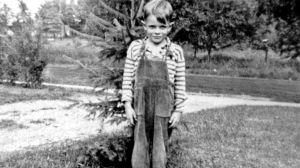 Not really. His many biographies say he was taught the ukulele by his mother and that he took so passionately to the instrument that by fourteen his guitar skills were very well developed.
Not really. His many biographies say he was taught the ukulele by his mother and that he took so passionately to the instrument that by fourteen his guitar skills were very well developed.
Shirley Westover, Shannon’s wife, would later comment that if there was anything genetic that affected the life of Del Shannon it was alcoholism.
Complicating matters for Shannon was a natural melancholy which would lead to fits of both creativity and depression. Many feel these qualities would later be an influence in his popular music.
He picked up gigs in local night clubs in Grand Rapids, married his childhood sweetheart (Shirley) in 1955 and then was drafted into the Army in 1956. While there he played in a band called the “Cool Flames”.
After his military service Charles returned to Coopersville and took different jobs in his home town.
He worked in a carpet store and was a strawberry picker for a while. At night and on weekends he continued to play with a country rock band at a local bar. Over the next several years as he grew in experience he signed a record contract and had to come up with a new name.
He adopted the name Del Shannon because Westover, he said, “had no ammunition.”
It is said the name “Del” came from a Cadillac Coupe de Ville driven by the manager of his carpet store job and “Shannon” was a wrestler name a friend wanted to adopt.
It should be noted that Shannon never completely abandoned his Westover identity. Even a 1968 album would be titled The Further Adventures of Charles Westover.
Shannon’s career foreshadowed the arrival of the Beatles by a couple of years and came after the phenomenon of Elvis. His rush to fame was no less spectacular than those artists and at times it was a bit much for the small town artist, Chuck Westover (as we he was known locally). All of it was overwhelming.
In fact, his history notes that when he made it big he returned home to a mixed welcome by the community. He had many supporters but the town mayor wasn’t one of them. They just were not yet sure about rock ‘n roll in Coopersville, Michigan.
Del Shannon would go on to a storied music career, ending up in the Rock and Roll Hall of Fame in 1999. Despite his success Shannon would eventually succumb to his depression when he died by suicide in 1990.
In tracing the genealogy of Charles Weeden Westover I noticed that the recorded histories of his parents and grandparents dating all the way back to John Westover in Sheffield around 1775 is pretty scarce. There is a lot of work to be done there.
I suspect, as with all of us, the story of Del Shannon cannot be fully understood until the life experiences of his ancestors can be fully discovered.
The Power of Example
(Note: The best of family history comes from stories. It is a rich blessing to have stories come from others and the story below is a great example of that. Written by Carma Baldwin Carlson this story is a quick telling of a period of time in the lives of Leon and Darryl Westover. It is outstanding insight into both their relationship as brothers and in their characters as men.)
The original Concord, California ward was organized in the very early 1950s.
This ward was composed of a lot of young families just getting started in life with not a great deal of money, but lots of dreams and ambitions. The Westover brothers, Leon and wife Maureen, and his younger brother Darryl and wife Evie, were two such families.
These brothers and their wives (who were sisters) came from families that had a rich heritage of talented and dedicated teachers. Teaching was their profession but they were fortunate to have a father who was a carpenter, who taught his boys the carpenter’s trade, in which they became quite proficient.
This new ward in Concord desperately needed a chapel in which to worship.
In those days each ward had to come up with the majority of the money to build their chapel, and the members of this fledgling ward had barely enough money to sustain their families. The Church’s volunteer labor service came to their aid. The members would be the builders of the meeting house, their work hours were kept track of, and the equivalent of the going rate for their labor was counted toward the financial debt they owed on the building.
The Westover brothers were MAJOR contributors in time working to build the chapel, and their carpenter skills were a major aid in the construction process.
Leon and Darryl had a very tight family relationship, and their love and esteem were very evident. But they had very different ways of doing things.
There were quite a few times that they each had much different ways they wanted something done, and very heated discussions would ensue.
Now, in the work crew there was a volunteer, a young non-member who had just married an active LDS girl.
He wanted to make “points” with his lovely new bride, so he did a lot of helping in building this chapel. It was the first time he had been around Latter-Day-Saint men, and he watched their interactions with a lot of interest.
When he saw these two brothers heatedly discussing some of the building procedures he began to get rather concerned — afraid that they might come to blows and begin to hate each other.
Then he noted something happen that seemed strange to him. At the height of these disagreements they would suddenly stop, look at each other, then say: “It is time to take it to the Bishop.”
So Bishop Markham was hunted up, the problem was explained to him, the Bishop thought about it, and a decision was made.
Then came the thing that amazed and baffled the young man.
The Westover brothers shook hands with the Bishop, gave each other a pat on the back or hug, went off and acted as if there had never been a disagreement.
They went right back to being their old good natured, fun loving brothers again. That was totally the end of it.
It got the young man to wonder, “What kind of people are these men?”
He credits the example of the Westover brothers as the catalyst which gave him the desire to learn about the Gospel and later join the Church.
